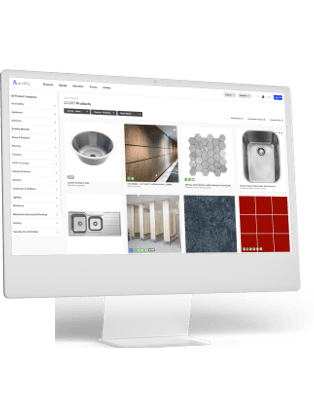-
Australia
Cladding: Enhancing Building's Appearance and Performance
Cladding is the ultimate makeover for a building, offering both style and functionality. It's the outer layer that not only adds flair but also protects and insulates.
Aesthetic Variety:
Cladding comes in a plethora of materials, textures, and colors, allowing you to personalize your building's look. From sleek metal panels to rustic timber, and classic brick to modern composite materials, the options are endless. Choose the cladding that suits your architectural style and vision.
Weather Resistance:
Beyond aesthetics, cladding acts as a shield against the elements. Rain, wind, and sunlight can wreak havoc on your building's exterior, but quality cladding keeps it safe. It prevents moisture from seeping in and regulates temperature, ensuring a comfortable indoor environment year-round.
Durable and Low Maintenance:
Investing in durable cladding means fewer worries about maintenance down the line. Properly installed and maintained cladding can withstand the test of time, requiring minimal upkeep. This durability ensures your building maintains its fresh appearance for years to come.
Insulation and Energy Efficiency:
Cladding isn't just about looks—it's also about performance. By adding an extra layer of insulation, cladding improves energy efficiency. It keeps heat inside during winter and blocks out excessive heat in summer, reducing your energy bills and environmental footprint.
Versatility in Design:
Whether you're renovating or building from scratch, cladding offers design versatility. It can be applied to various surfaces and installed in different orientations, giving you creative freedom. Horizontal, vertical, diagonal—cladding adapts to your vision.
Cladding Materials and When to Use Them
Cladding is an important part of a building, not only does it protect from rain and other weather, but it delineates space, defines the building and gives aesthetic quality. Cladding can be made from a wide range of materials, each with their own advantages and uses. This article will discuss several choice cladding materials and their benefits and applications.
Brick
There is no doubt that brick is one of the most popular materials used for cladding of all time. Not only are the materials common and easy to make, but their durability is almost unmatched. Bricks are low cost, can last hundreds if not thousands of years with little maintenance and with no need for painting. Bricks are great for insulation as they act as a thermal mass to trap heat. Although they are made from natural materials, they require a lot of energy and carbon to produce.
Glass
Glass cladding has many properties that make it an ideal material to use on large buildings, most commonly seen on the sides of skyscrapers. The biggest benefit is its energy efficiency. Cladding an entire building in glass will allow natural light to cover as much area as possible, lowering energy costs for lighting. Modern glass can regulate heating in buildings, eliminating more power costs. Glass also does not rust, and can easily withstand most weather conditions. Another advantage of glass is its practical aesthetic qualities, especially in tall buildings. Not only does it look good on the outside, but inhabitants can enjoy the view from inside.
Aluminium
Another popular cladding material for large buildings is aluminium due to its versatility. Aluminium is much more malleable and functional than other materials, as they can be easily cut or bent to any shape, easily cladding places that would be impossible with other materials. They are lightweight, making installation easier and requires little to no maintenance making it quite cost effective. Non-combustibility is another advantage that aluminium has as a metal cladding.
Fibre Cement
This is a composite material made from cement, sand and cellulose fibres. It is the most energy efficient material to use for cladding, except for timber. However, it does have other advantages over timber: durability against elements, unsusceptible to termites, fire resistant, and is not prone to warping. However, it may require painting, is not recyclable and has a fairly high labour cost. Nonetheless, fibre cement is still a worthwhile cladding material.
Vinyl
This is the most popular choice for new homes, as it is cheap, easy to use and can imitate other materials like wood. Like other good cladding materials, it requires little maintenance once it is installed. Vinyl cladding can also have insulation built in, saving costs on heating. The main disadvantage for vinyl cladding is the material it’s made out of, polyvinyl chloride or PVC, is non-renewable and becomes a carcinogen when burnt.
Wood
There is little that surpasses the elegance of wood. Wood is abundant, reasonably priced and looks amazing. Wood panels can be made in a variety of sizes and shapes, making it a very versatile material. If sourced correctly, wood is the most sustainable material, and can be reused for other purposes after it’s served its purpose. Wood needs to be treated in order to protect it from the elements, but if done correctly can greatly increase the value of your property.
Stone
Along with brick, stone is one of the oldest building materials in history. Stone buildings constructed thousands of years ago are still standing to this day. Like in ancient times, stone is sourced from a quarry. Naturally produced stones are extremely resilient to all weather conditions, resistant to fire and decay and retains its appearance indefinitely. Despite these advantages, there are several drawbacks to stone siding. First of all, it is quite costly to transport and install due its weight and should only be installed by a stonemason. Mining for stone also produces a significant amount of carbon from fossil fuels. Lastly, although stone is very durable, it costs a lot to fix if it does become damaged.
Cladding is more than just a facade—it's a statement. With its aesthetic variety, weather resistance, durability, and energy efficiency, cladding enhances both the appearance and performance of your building. Whether you opt for metal, timber, brick, or composite, cladding is the key to unlocking your building's full potential.
Building Materials Categories
- Adhesives
- Balustrades & Handrails
- Bricks, Blocks & Concrete
- Building & Construction Accessories
- Car Park Solutions
- Cladding
- Façade
- Fencing
- Insulation
- Paints & Protective Coatings
- Plumbing & Drainage
- Railings
- Signage
- Solar Products
- Structural Building & Construction Products
- Waterproofing Systems
- Other Building Materials








